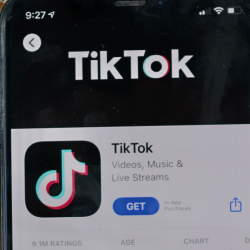Marketing leaders across the globe are wrapping up 2023 deliverables and in active planning for 2024
But how do brands break through? What do they focus on for the New Year? How do marketers decide what works? Why not go for what works with today’s consumers: radical honesty. Defined as a brand owning truth, transparency, and realistic marketing messaging that sells the benefits of a product or service without guile and ignoring weaknesses. After twenty years in the industry I’ve seen how the marketing sausage is made, across big and small companies and agencies.
Decisions usually break down along a few types of key decision makers: you have the trend hunters who love shiny objects and buzzy tech. There are those who hold onto what they did the previous year. And finally, the smaller group of insight seekers hoping to deliver on what their audiences actually want.
All of the key marketing types hope to get a leg up on the competition and chart a clear path in the new year. But let’s propose a new take for 2024. Let us look ahead to the crossroads of decision-making, to create a path consumers want and need. Simply put, let honesty be your guide. Before everyone is scared off, keep in mind Edelman runs a yearly trust survey that reported the following between 2021 and 2023:
- 94% of consumers are more loyal to brands that show complete transparency
- 86% of consumers claim transparency is key when picking a brand
- 68% say honesty is very to extremely important for a brand
- 71% expect companies to pull ad money from platforms that spread misinformation
Consumers (especially Gen Z and Millennials) are hungry for companies that are radically transparent, authentic, and trustworthy.
This, in turn, begs for marketing honesty…
First, the platforms brands use are nearly important as the message conveyed
Avoid shiny object syndrome by taking time to understand who is using a platform and even more importantly how. Social marketing, for instance, has largely shifted over to influencers as customers trust them to give an honest take on brands they like, versus hearing from a brand directly. The problem being that brands won’t give an honest take, where third-party influencers will.
Imagine a brand gave realistic selling points, tips on how to overcome any product weaknesses, and showed real people using the product. Doing this requires internal marketing bravery to divert from the mass and highlight what makes a brand sing. Brands can own what is natively theirs.
Second, get to know your customers and what they actually like about a brand
At tms we survey customers directly and regularly to better understand everything, from sentiment to actual value received. This provides the benefit of understanding consumer and brand perceptions on top of normal metrics like engagement rates and conversions. This will guide brand messaging on what to share and where, while maintaining radical honesty.
Third, and this is the hardest, most marketing decisions have a chain of command to ladder through
A marketing director will need to get a VP (and then a CMO) to green light to take an honest campaign to market. In my experience, this group thrives on hard numbers that can highlight the monetary advantage of honesty. Survey brand customers to deliver specific potential return metrics with radically honest messaging. Another example of this: many companies struggle with continued acquisition, or in layman’s terms, signing up new users and converting new customers. They also struggle with retention and frequency; keeping customers coming back and buying at regular intervals. Good news, as cited above, 94% of customers will be more loyal if a brand is honest. Recommend a smaller and targeted campaign test with honest and transparent messaging to show the payoff in order to build a larger campaign across the year.
Brands may be resistant at first, but they’ll find taking an honest look at themselves and reflecting that in their messaging can pay dividends by building real trust with their customers. This in turn helps avoid the confusion of where and when brands should look in the future. Look within.
Featured image: Gray / Unsplash






























